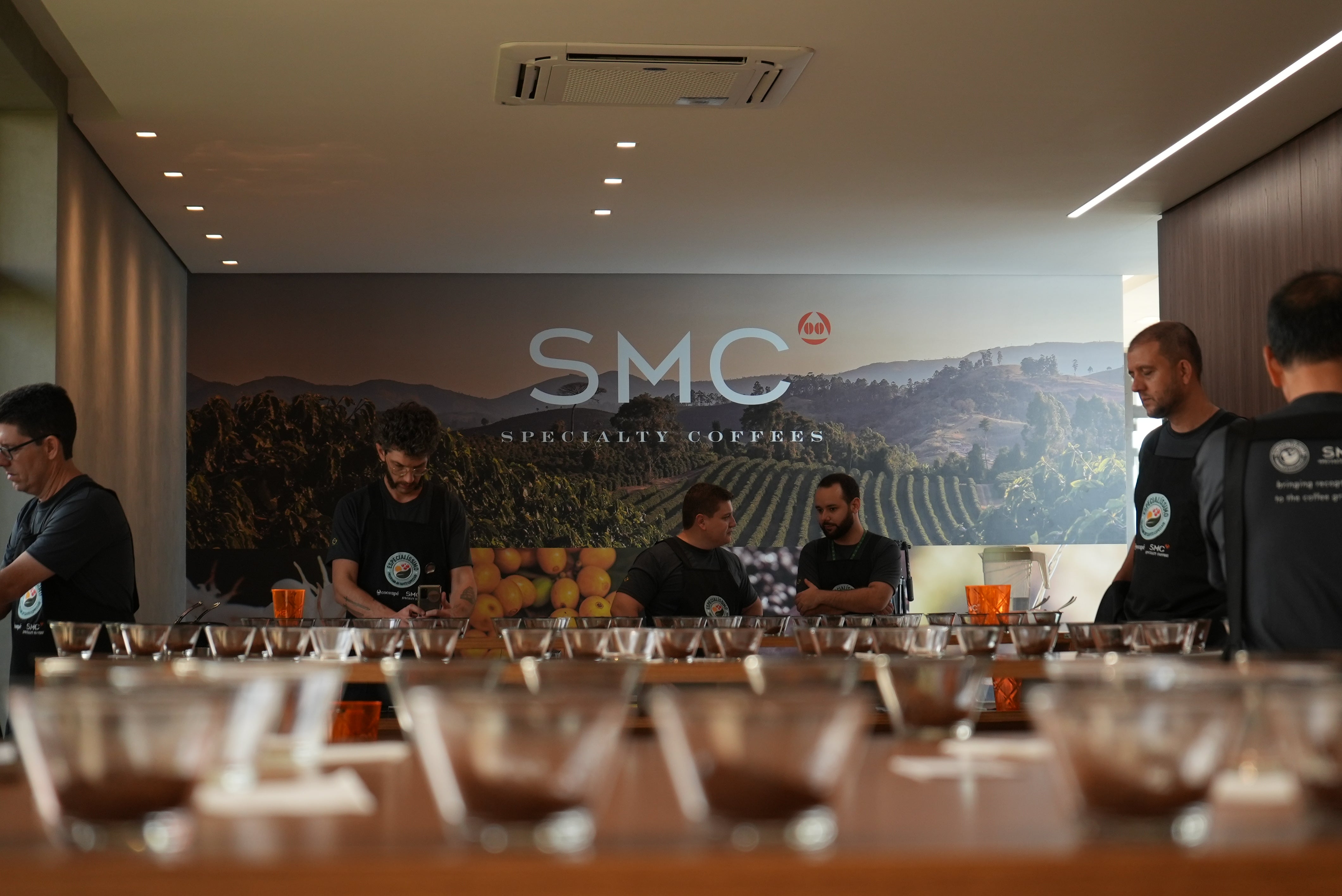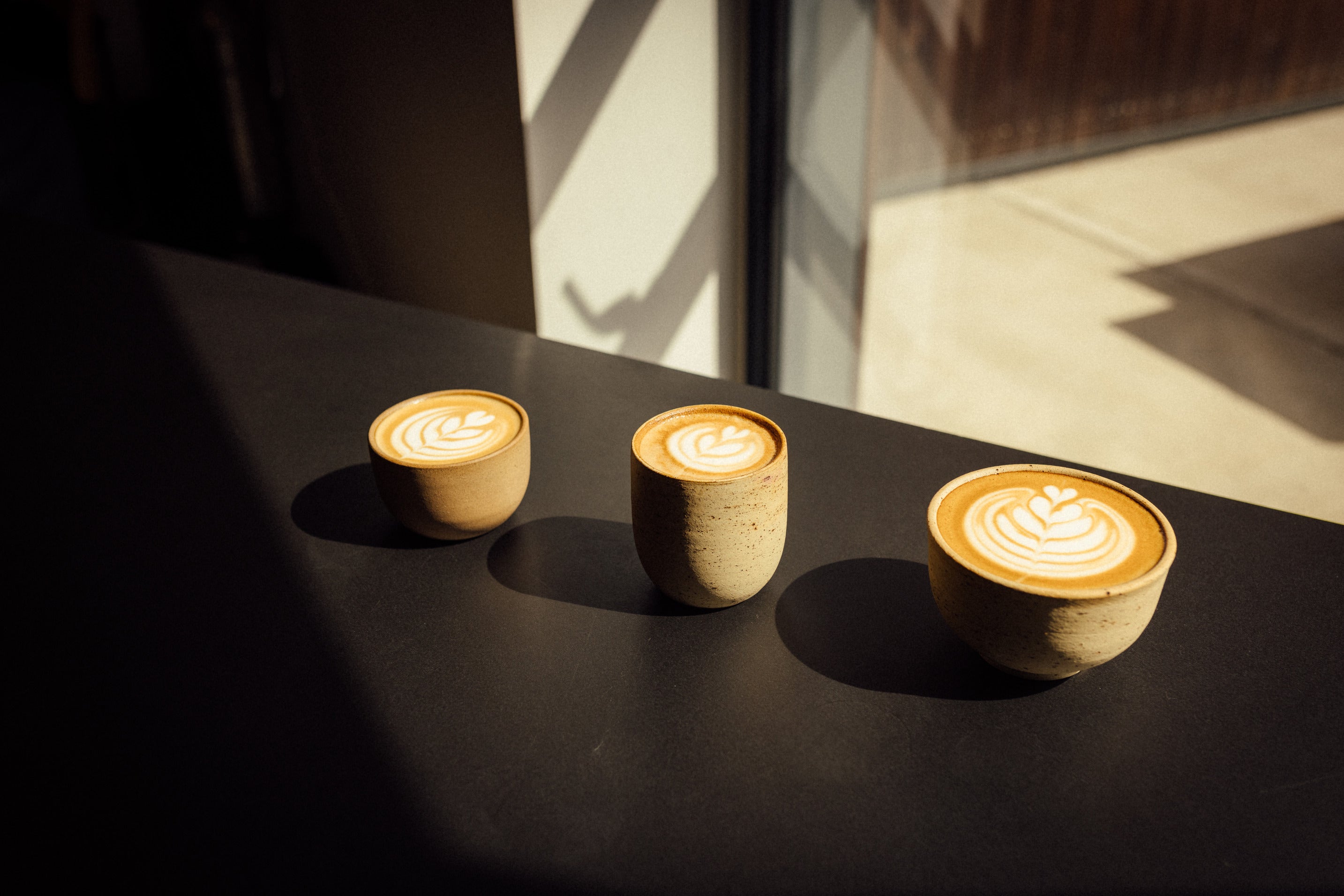Chances are, you know someone who chooses oat over soy; seeks out non-homogenised milk; or looks for a refill station or local delivery service for either their plant-based or dairy choice. Now more than ever, the topic of dairy and alternative milks is a big one. From big coffee roasters in the US using oat milk as their default pour for white coffees, to sustainability, ethical approaches, and environmental concerns changing the way many of us make consumer choices, the awareness of what we pour over our granola, into our smoothies and – of course – our coffee, continues to evolve.

We’re not here to tell you how to drink your coffee. Whether you like yours black, with milk, or with an alternative to dairy, what’s always mattered to us is quality. Let’s explore the complex world of dairy, and beyond, and why both milk and our alternative of choice, oat, are equally important to us (and our customers).
MILK AND ALTERNATIVES; A LITTLE HISTORY
Milk is thought to have existed in the human diet for at least 10,000 years, and for approximately 6,000 years, some – but not all – of us have formed the ability to be able to consume and successfully digest milk beyond infancy, into adulthood. This is thanks to clever gene evolution, with our bodies learning how to produce the enzyme lactase: this is what breaks down the milk sugar lactose. It’s easy to lose yourself down a rabbit-hole of health claims and scientist verdicts arguing whether cow’s milk is meant for human consumption, but dairy can form a good source of calcium, protein, and potassium, and there’s plenty of people who simply enjoy the taste of it, in their coffee or otherwise.
The business of making alternative milk begun in the 1950s—and in the last 30 years it’s moved fast into the mainstream market with veganism, health concerns, dietary needs and, again, a preference in taste, adding to the reasons people place a carton in their basket. Today you’ll find over 50 types of plant milk available, most of which are easily found in your local supermarket. From pea, cashew, rice, hemp, almond, and more, the choice is plentiful. Recent studies show that 32 percent of UK households buy dairy-free milk; 90 percent of those who choose plant-based alternatives still purchase products such as cheese and ice cream, meaning these choices aren’t solely based on diet choices and intolerances.
MEET TRINK DAIRY
We are lucky to work with some of the very best dairy farmers on our doorstep here in Cornwall—and that’s no exaggeration. In fact, Trink Dairy take community very seriously, and are proud to serve shops, cafés, and restaurants all within a ten-mile radius of their beautiful farm. Overlooking Penzance and St Ives Bay, the cows raised by the Knowles family have possibly one of the best views around.


Enviable location aside, the cows’ welfare is key to the farm’s ethos, resulting in the highest quality milk (winning numerous awards, including a gold Taste of the West 2022). The cows are grass and pasture fed, which the family attribute to the resulting richness in Omega 3 fats, vitamin E, beta-carotene and the beneficial fatty acid, CLA, which is thought to benefit the immune system and reduce the risk of heart attack. Their milk isn’t homogenised, either. A common practice in mass-produced milk, homogenising is a process that distributes fat globules evenly, preventing the cream from separating and rising to the top. The pasteurising process starts within an hour of the cows being milked, travelling a mere few metres from cow to bottle, and it’s never standardised, meaning the milk isn’t separated into its cream and liquid components before being re-blended to create the required amount of fat for whole, semi-skimmed, and skimmed milk.
What you get from Trink is whole, natural, real milk, bottled by hand, sold at the farm, or collected for delivery the next morning.
Learn more about Trink - here
MEET THE ESTATE DAIRY
For our London coffee shops, we are delighted to be able to work with The Estate Dairy, a family-run business, led by husband and wife team, Shaun and Rebecca Young. Dedicated to producing and bottling the highest quality of unhomogenised milk, all dairy produced comes from traceable single farm gates where traditional milk making methods are matched with the latest dairy producing technology. Milk is sourced from the Chew Valley, located at the heart of the Bristol countryside, produced by pedigree Guernsey cows.


Shaun worked in the coffee industry, while Rebecca comes from a family of dairy farmers. They fervently believe in the fair treatment of cows—and that level of care results in the milk they bottle. The team have worked closely with a CoffeeMind Sensory Scientist as to better understand the relationship between feed and milk aroma, enabling The Estate Dairy to develop a specially formulated diet to create milk that works best with coffee, also being mindful that natural seasonal changes mean adapting diets to work with this, ensuring consistency of flavour and foam stability.
This is conscientious milk, made with coffee in mind; the Estate Dairy work with a dairy scientist and consultant, monitoring how their product reacts with coffee. Quality control is paramount, with the team testing the milk before it’s bottled, tracking and checking for consistency.
Learn more about Estate Dairy - here
WHY WE CHOOSE OATS
When it comes to an alternative to dairy, we opted for oat across all of our sites. Why? We found it to be the best in terms of taste when paired with coffee, feel that the texture and consistency copes well when heated (resulting in silky latte art, too), and that it is the most common alternative request by our customers.

It’s not all just about taste and aesthetics, of course. We also feel that the ingredients needed to make oat milk (mainly oats, and water) make the least impact on the environment unlike, say, almond milk as an alternative, which requires gallons of water for crops to grow—something of an issue in California (80 percent of the world’s almonds are grown there), where drought and concerns over water shortages are common.
OAT MILK RECIPE
Oat milk is by no means a perfect choice: we’re all too aware of those difficult to recycle Tetra Paks, and not everyone is lucky enough to have a local store offering refill options. This simple recipe is popular with staff at Origin. With just a few ingredients, and five minutes of your time, you can make your own oat milk at home: we’ve tried and tested it under the steam wand, too, and it makes a good, silky flat white.
INGREDIENTS
- 1 x cup rolled oats
- 3 x cups water
- 2 tbsp oil (rapeseed, walnut, coconut, or sunflower oil)
- Pinch of sea salt
METHOD
- Place all ingredients in the blender, and blend for approximately 45 seconds (avoid blending for too long, to avoid a slimy texture)
- Pour the blended oat milk (over a bowl), into your cloth bag and gently squeeze, straining the liquid through the bag. Decant from the bowl, into a bottle.
- Keep in the fridge and shake well before use. Use within 3-5 days.
TEAM OAT, OR TEAM DAIRY?
Here at our HQ Roastery, we’re diverse coffee drinkers. We like long blacks and batch brew on tap, order oat flat whites, and dairy lattes. There’s no right or wrong choice; it’s all down to personal taste. With more options available, we were curious to know what our customers opted for, and if there’s any difference to be had between our London and Cornwall coffee shops.
Turns out that Charlotte Road in Shoreditch takes the most requests for oat milk, with nearly 30 percent of our customers making this their preference, only slightly ahead of The Warehouse, in Penryn, Cornwall. Dairy is still the preferred choice at our Entrance Hall location over at The British Library.
| REGION | CAFE NAME | % OF OAT MILK DRINKS VS HOT DRINKS |
| Cornwall | Roastery Cafe | 23.6% |
| Cornwall | Harbour Head | 16.6% |
| Cornwall | The Warehouse | 27.9% |
| London | British Library | 15.3% |
| London | Shoreditch | 28.1% |
| London | Southwark | 24.4% |
LATTE ART TIPS
Whether you’re practicing latte art at home using dairy, or with an alternative milk, you’ll need to take the same rules into consideration so you can create the perfect pour for your flat white, latte, or cappuccino. Here’s some simple tips to take to the steam wand.

PREPARATION IS KEY
Make sure your workspace is clean, and your milk – oat or otherwise – is chilled. You’ll want to have your espresso shot pouring as you heat your milk – you don’t want that coffee sitting idle for too long while you’re prepping your milk.
KEEP YOUR TEMPERATURE IN CHECK
Getting the temperature right really is important: not hot enough, and you’ll find the foam to be thin, and with air bubbles; too hot, and it’ll develop an unpleasant aroma and poor taste, losing sweetness and flavour. So, what is the right temperature? The sweet spot is between 55-65c. Over time, you may find you’re able to gauge the temperature well, simply holding the jug as you heat, but a thermometer is an easy and cheap way to make sure your milk is at optimal temperature, ready to pour.
USE YOUR SENSES
In order to consistently heat great milk, you’ll want to pay close attention to how it sounds, and where the steam wand is sitting in your jug as you heat it up. Screeching when you start? Don’t be afraid to adjust the angle of the jug during the process. You’re looking to create a whirlpool in your milk, letting just the right amount of air circulate. Too little air, and your milk will lack texture; too much air, and you’ll end up with a whole lot of froth.
GET READY TO POUR
With your milk heated, give the jug a firm, gentle tap, to get rid of any bubbles. A few gentle swirls in the jug, and it should resemble wet, glossy paint. You’re ready to pour. Add a little milk to the espresso and again, gently swirl, blending the coffee shot and milk together before you create any desired latte art.
LOOKS AREN'T EVERYTHING
Swans; tulips; rosettas; there’s plenty of fun to be had when it comes to creating latte art and while presentation goes a long way, we will stress that, without a great, well-extracted shot of quality coffee, and properly heated milk, those good looks mean nothing. Enjoy the process, and the drink—the art is simply a bonus.
--
Shop our latest coffee collection and pair your favourite milk or milk alternative - here














